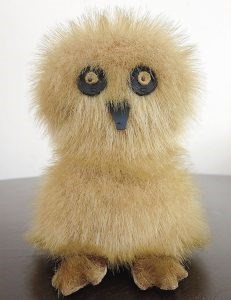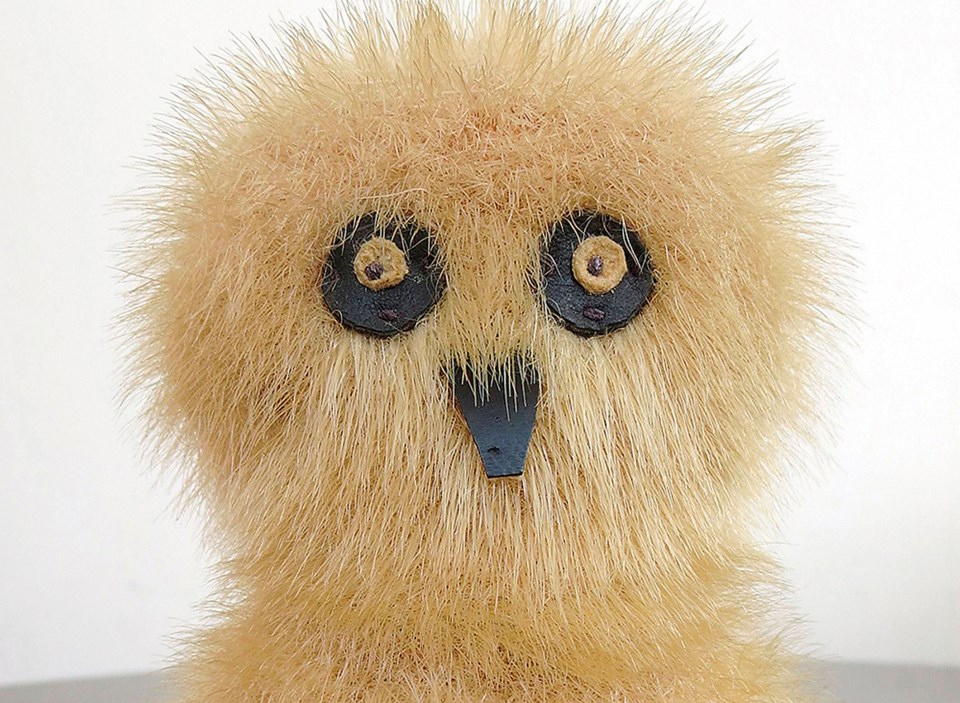 It may have been the strangest thing we ever sent to the U.S.A.
It may have been the strangest thing we ever sent to the U.S.A.
We’ve shipped our southern neighbours crude oil, gold, timber, potassium chloride, comedians and natural gas. But in 1964, we sent them Ookpik.
Its arrival at an international trade fair in Philadelphia had been heralded for weeks on posters around town. “The Ookpik is coming!” banner headlines read.
The Canadian delegation had been looking for something distinctively Canadian to promote at the nation’s trade fair booth. The original plan was to use the maple leaf as the symbol, which many Americans already associated with Canada.
But that all changed after officials discovered a Department of Northern Affairs catalogue of Inuit art. Inside was a strange but oddly appealing representation of an Arctic owl. Ookpik is the Inuit word for “snowy owl” or “Arctic owl.”
 The owl figure had been created by Jeannie Snowball, a worker at the Fort Chimo Eskimo Co-operative in northern Quebec (Fort Chimo was renamed Kuujjuaq in 1980).
The owl figure had been created by Jeannie Snowball, a worker at the Fort Chimo Eskimo Co-operative in northern Quebec (Fort Chimo was renamed Kuujjuaq in 1980).
The Ookpik was a huge hit at the trade fair, with hundreds of orders pouring in from American buyers. It was seen by them as something distinctively Canadian, like hockey, maple syrup, rye whiskey, and saying “eh” and “zed.”
Ookpiks "are slightly silly looking, but they're oddly wise, too, and many Canadians will melt before you at the sight of one," author Douglas Coupland noted in Souvenirs of Canada.”
Not long after the Philadelphia fair the Ookpik became available for sale across Canada. I remember my father bringing one home for my four-year-old sister, Frances.
The massive popularity of the Ookpik created an equally enthusiastic interest in Inuit art. Pricey “Eskimo” stone carvings became and remain today highly desired gift items in shops across the country. The stone carvings depict northern animals, traditional lifestyles, and mythological themes.
The Inuit had been carving figures and decorative but highly functional tools for centuries before Europeans arrived. But Inuit art as we known it today didn't become an art form of its own until the 1940s.
James A. Houston, a Toronto artist, was instrumental in encouraging the Inuit to create works for southern markets as a way of making a living. But it took the strange little Ookpik to bring the art form to mass popularity in the 1960s and onwards.
I’m not sure what happened to Frances’ Ookpik. One minute, it seemed as though everyone in Sarnia had one or wanted one. The next thing you knew, they had disappeared.
For many of us, though, the Ookpik, lives on as one of those odd little souvenirs of Canada that was never quite able to replace the beaver or moose.
